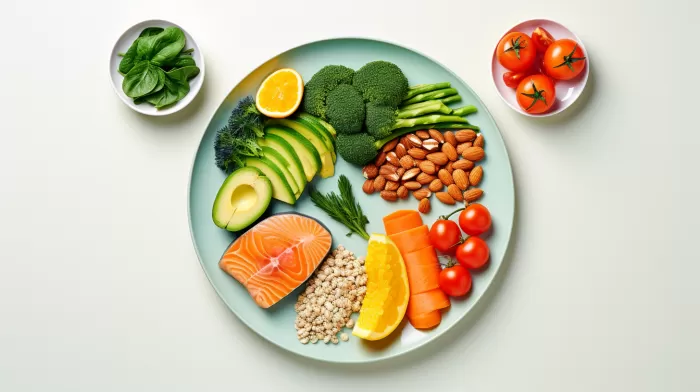Weight loss can be a challenging journey, but scientists at Cornell University have discovered a simple yet effective tool to help manage your food intake. The study found that, on average, people tend to consume 92 percent of what is on their plate. This breakthrough may be the key to eating less and slimming down.
Are you consistently overeating without realizing it? No matter how healthy the meal is, if you are consuming excessive portions, you are more likely to pack on the pounds rather than lose them.
Portion Control: A Science-Backed Approach
It’s imperative to settle on the right food quantity and understand which portion sizes best suit your nutritional needs. So why do we end up overeating and consuming large portions?
Brian Wansink, Ph.D., director of the Cornell Food and Brand Lab, has the answer. He suggests the reason we finish nearly everything on our plates is that we subconsciously already know in advance how much we’ll need. Just being aware that you’re likely to eat almost all of what you serve yourself can help you be more mindful of portion size.
The research not only indicates that cutting back your portions will make it easier to eat less, but awareness of this, combined with a conscious effort to adjust your portion sizes, can contribute to more successful weight loss.
Accurate Portions on Plates
Visualizing appropriate portion sizes may sound easier said than done. Follow these tips to help ensure you serve just the right amount of food.
- Pick Smaller Plates: A smart way to control portions is by using smaller plates and bowls. You are less likely to overload a smaller dish, and the added bonus is that the food will look bigger on tiny plates, tricking the mind into believing that you’re eating more.
-
Divide Your Plate: Cut your plate into quarters. One half is for vegetables and salad, one-quarter for protein, and the final quarter for carbs. This will make sure that you consume a balanced meal without overeating any specific food group.
-
Avoid Seconds: Make a rule that you will not go for second helpings. By doing this, you cut down on unnecessary calories that can leave you feeling overly full.
-
Be Selective with Serving Utensils: Choose spoons with longer handles or flatware that’s challenging to scoop with. This will make it more difficult to load up on large portions and serve as a reminder to keep portions smaller.
-
Put Excess Food Away: Don’t leave any leftovers on the counter or table. Instead, pack them away in the fridge immediately. Having to get up, uncover the food, and reheat it makes you think twice about going back for seconds.
Knowing When You’re Full
We often assume that eating until your stomach is full signifies the appropriate time to stop eating. However, it often takes our brain a little while to register that we are, indeed, full. Slowing down the pace of your eating can give your brain enough time to catch up with your stomach and notify you when it’s time to stop.
By eating more mindfully, chewing slowly, and taking breaks between bites, you can improve your relationship with food. Practicing portion control techniques will help you lose weight in a sustainable and healthy manner.
Balancing Portion Sizes with Adequate Nutrition
Reducing meal portion sizes is only half the battle. For successful weight loss and overall health, it’s essential to maintain a balanced diet, including a mix of proteins, healthy fats, and carbohydrates.
Eating an array of colorful vegetables, lean proteins, complex carbohydrates, and healthy fats will not only assist you in meeting your weight loss goals but benefit your overall health as well.
Remember, you don’t have to eliminate your favorite foods to lose weight. Simply focusing on portion control and making conscious choices about the amount of food you consume can make all the difference. With your newfound knowledge of this important weight-loss tool, you’ll be one step closer to achieving your goals.



